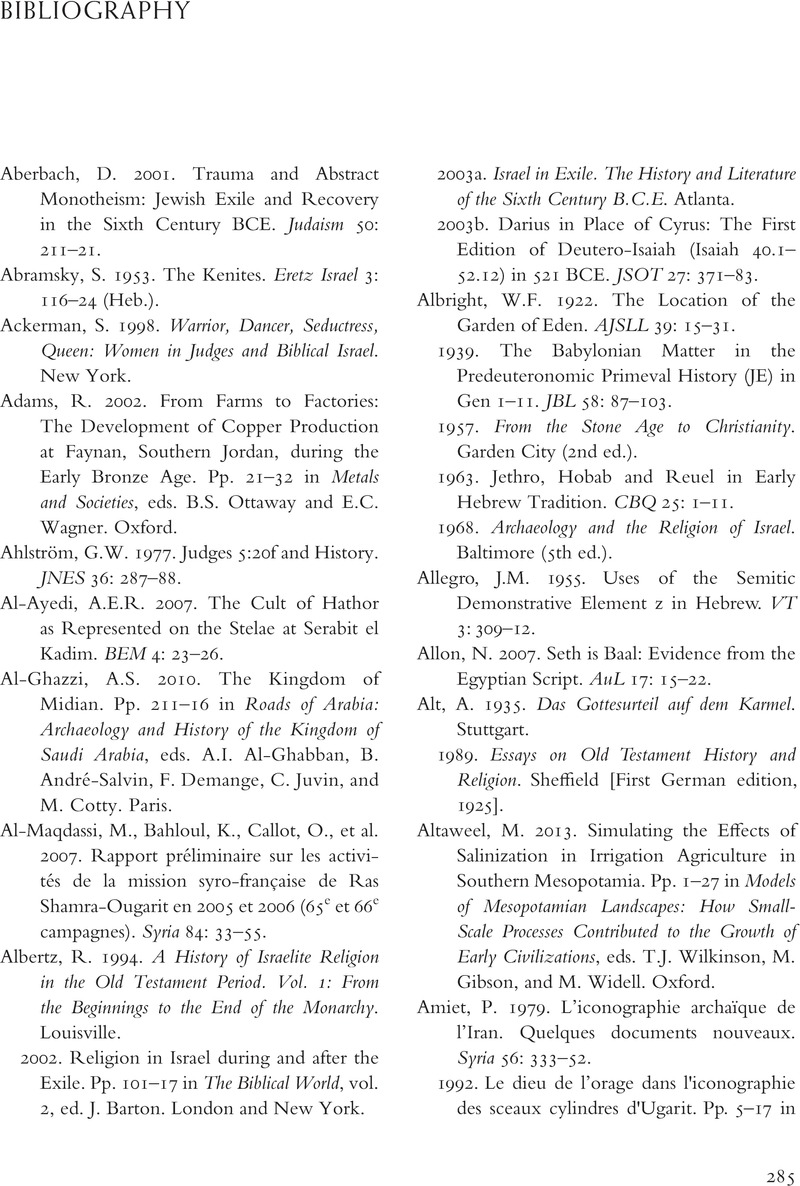Book contents
- Yahweh and the Origins of Ancient Israel
- Yahweh and the Origins of Ancient Israel
- Copyright page
- Contents
- Figures
- Tables
- Preface
- Abbreviations
- Introduction: Idols of Knowledge
- Part I The Movement of Emancipation in the Southern Levant
- Part II The Primeval Identity of YHWH
- Part III The Conception of Israel
- Conclusion
- Bibliography
- Subject Index
- Scripture Index
- ANE Sources and Classics Index
- References
Bibliography
Published online by Cambridge University Press: 18 May 2023
- Yahweh and the Origins of Ancient Israel
- Yahweh and the Origins of Ancient Israel
- Copyright page
- Contents
- Figures
- Tables
- Preface
- Abbreviations
- Introduction: Idols of Knowledge
- Part I The Movement of Emancipation in the Southern Levant
- Part II The Primeval Identity of YHWH
- Part III The Conception of Israel
- Conclusion
- Bibliography
- Subject Index
- Scripture Index
- ANE Sources and Classics Index
- References
Summary

- Type
- Chapter
- Information
- Yahweh and the Origins of Ancient IsraelInsights from the Archaeological Record, pp. 285 - 320Publisher: Cambridge University PressPrint publication year: 2023

